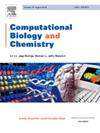PayloadGenX, a multi-stage hybrid virtual screening approach for payload design: A microtubule inhibitor case study
IF 2.6
4区 生物学
Q2 BIOLOGY
引用次数: 0
Abstract
Due to the rapid emergence of treatment-resistant cancers, there is a growing need to discover new anticancer therapies. Antibody-drug conjugates (ADCs) are aimed at solving this problem by specifically targeting and delivering cytotoxic payloads directly to cancer cells, thereby minimizing damage to healthy cells and enhancing treatment efficacy. Therefore, it is highly important to find an effective cytotoxic payload to ensure maximum therapeutic benefit and overcome cancer resistance. To address this challenge, we have developed a multi-stage hybrid virtual screening (VS) approach for payload design. We collected approximately 900 million molecules from databases such as ZINC12, ChEMBL, PubChem, and QM9. Additionally, 220 approved small molecule anticancer drugs were collected. Initially, these molecules were screened based on the Lipinski Rule of Five (RO5) criteria, resulting in 20 million molecules that met the drug-like properties criteria. Subsequently, fragments being key factor in this approach were generated from approved small molecule cancer drugs. This fragment-based screening approach resulted in identifying 6500, 36770, and 150,000 anticancer-like drugs with a similarity threshold greater than 0.6, 0.5, and 0.4. Similarity threshold when increased near to 1 bears better chance of discovering cancer like drugs. Further molecular docking of these anticancer-like drugs with β-tubulin resulted in identifying the top 1000 ranked drugs as microtubule inhibitors. ADMET analysis and synthetic validation followed by cell cytotoxicity further helps in shortlisting the 5 most effective payloads for further confirmation in preclinical setting. Additionally, molecular dynamics simulation was performed to confirm the structural stability and conformational dynamics of the Beta-tubulin-ligand complexes over a 100 ns simulation. In conclusion, this study effectively utilizes extensive compound databases and multi-stage screening methods to identify potent payloads, demonstrating promising advancements in discovering effective anticancer therapies.
由于抗药性癌症的迅速出现,人们越来越需要发现新的抗癌疗法。抗体药物共轭物(ADCs)旨在通过特异性靶向和直接向癌细胞输送细胞毒性有效载荷来解决这一问题,从而最大限度地减少对健康细胞的损害并提高治疗效果。因此,找到一种有效的细胞毒性有效载荷以确保最大的治疗效果并克服癌症耐药性是非常重要的。为了应对这一挑战,我们开发了一种用于有效载荷设计的多阶段混合虚拟筛选(VS)方法。我们从 ZINC12、ChEMBL、PubChem 和 QM9 等数据库中收集了约 9 亿个分子。此外,我们还收集了 220 种已获批准的小分子抗癌药物。最初,这些分子是根据利平斯基 "五规则"(RO5)标准进行筛选的,最终有 2,000 万个分子符合类药物特性标准。随后,从已获批准的小分子抗癌药物中产生了作为该方法关键因素的片段。这种基于片段的筛选方法分别鉴定出 6500、36770 和 15 万种相似度阈值大于 0.6、0.5 和 0.4 的类抗癌药物。当相似性阈值提高到接近 1 时,发现癌症类药物的几率会更大。进一步将这些抗癌类药物与β-微管蛋白进行分子对接,最终确定排名前 1000 位的药物为微管抑制剂。ADMET 分析和合成验证以及细胞毒性进一步帮助筛选出 5 种最有效的有效载荷,以便在临床前环境中进一步确认。此外,还进行了分子动力学模拟,以确认 Beta-tubulin-配体复合物在 100 ns 模拟时间内的结构稳定性和构象动态。总之,这项研究有效地利用了广泛的化合物数据库和多阶段筛选方法来确定有效的有效载荷,在发现有效的抗癌疗法方面取得了令人鼓舞的进展。
本文章由计算机程序翻译,如有差异,请以英文原文为准。
求助全文
约1分钟内获得全文
求助全文
来源期刊

Computational Biology and Chemistry
生物-计算机:跨学科应用
CiteScore
6.10
自引率
3.20%
发文量
142
审稿时长
24 days
期刊介绍:
Computational Biology and Chemistry publishes original research papers and review articles in all areas of computational life sciences. High quality research contributions with a major computational component in the areas of nucleic acid and protein sequence research, molecular evolution, molecular genetics (functional genomics and proteomics), theory and practice of either biology-specific or chemical-biology-specific modeling, and structural biology of nucleic acids and proteins are particularly welcome. Exceptionally high quality research work in bioinformatics, systems biology, ecology, computational pharmacology, metabolism, biomedical engineering, epidemiology, and statistical genetics will also be considered.
Given their inherent uncertainty, protein modeling and molecular docking studies should be thoroughly validated. In the absence of experimental results for validation, the use of molecular dynamics simulations along with detailed free energy calculations, for example, should be used as complementary techniques to support the major conclusions. Submissions of premature modeling exercises without additional biological insights will not be considered.
Review articles will generally be commissioned by the editors and should not be submitted to the journal without explicit invitation. However prospective authors are welcome to send a brief (one to three pages) synopsis, which will be evaluated by the editors.
 求助内容:
求助内容: 应助结果提醒方式:
应助结果提醒方式:


